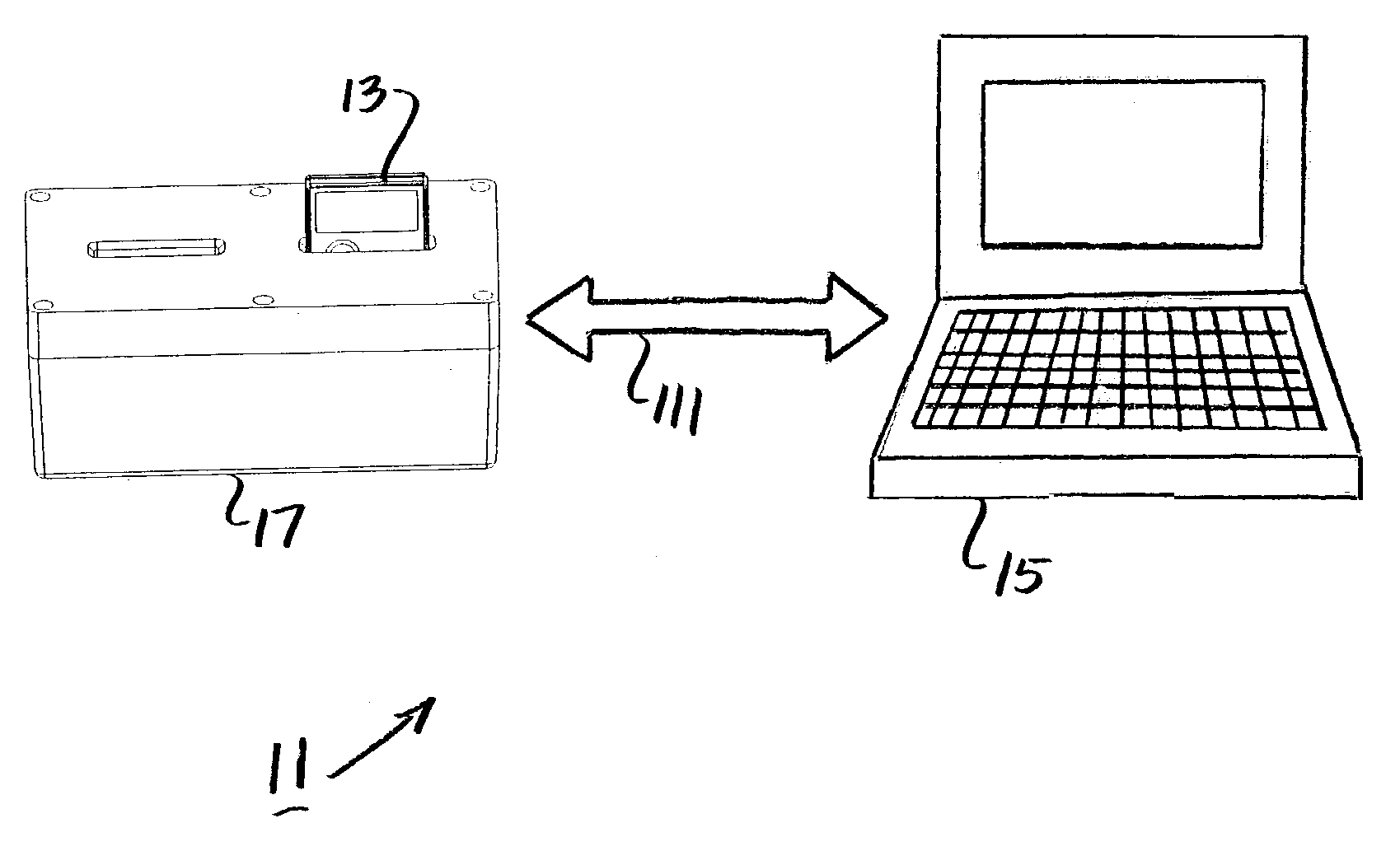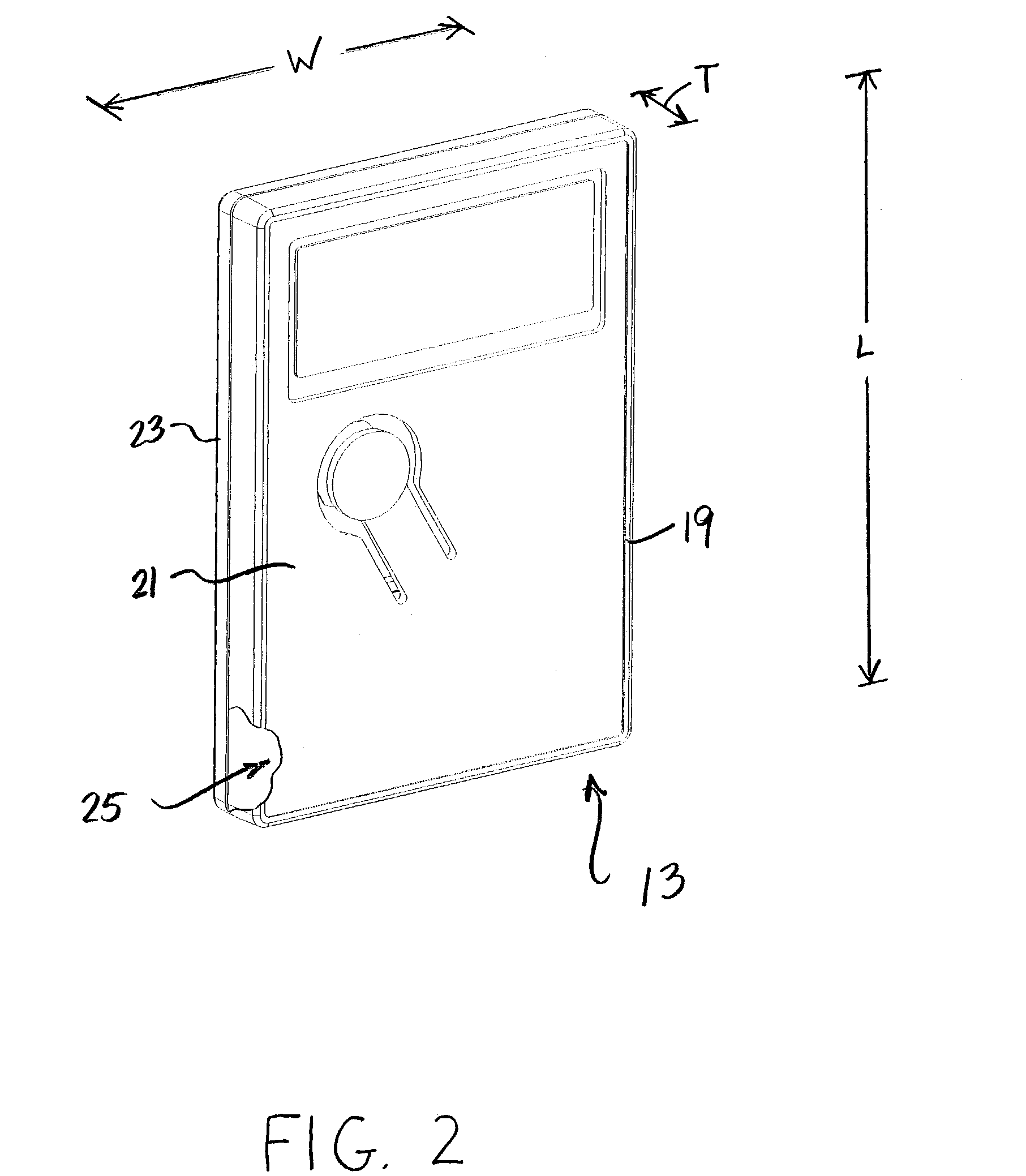System and method of monitoring temperature
- Summary
- Abstract
- Description
- Claims
- Application Information
AI Technical Summary
Benefits of technology
Problems solved by technology
Method used
Image
Examples
Embodiment Construction
[0048]Referring now to FIG. 1, there is shown a system for monitoring an externally applied parameter which is constructed according to the teachings of the present invention, said system being identified generally by reference numeral 11. Although system 11 is described below in the context of monitoring the temperature of a client controlled environment (e.g., the interior of a temperature controlled package), it should be noted that system 11 can be modified to monitor other types of externally applied parameters, such as humidity, mechanical shock and vibration, pH levels, pressure, voltage, and current, without departing from the spirit of the present invention.
[0049]System 11 comprises a temperature monitoring device 13, a data programming device 15, and an adaptor 17. As will be described further in detail below, temperature monitoring device 13 is a disposable temperature monitoring unit which can be programmed for operation by data programming device 15 via adaptor 17.
[0050...
PUM
 Login to View More
Login to View More Abstract
Description
Claims
Application Information
 Login to View More
Login to View More - R&D
- Intellectual Property
- Life Sciences
- Materials
- Tech Scout
- Unparalleled Data Quality
- Higher Quality Content
- 60% Fewer Hallucinations
Browse by: Latest US Patents, China's latest patents, Technical Efficacy Thesaurus, Application Domain, Technology Topic, Popular Technical Reports.
© 2025 PatSnap. All rights reserved.Legal|Privacy policy|Modern Slavery Act Transparency Statement|Sitemap|About US| Contact US: help@patsnap.com



